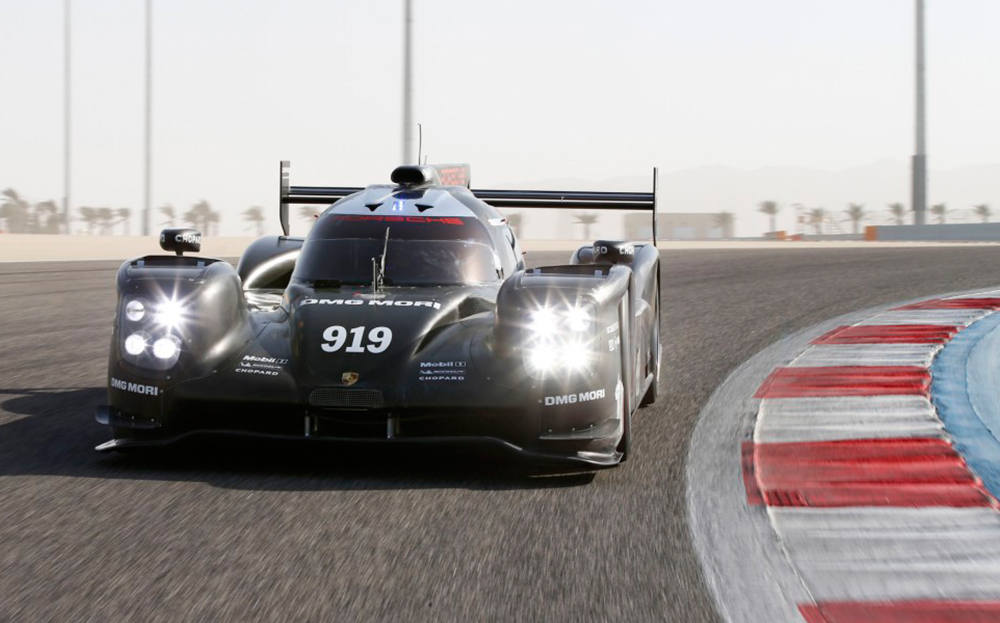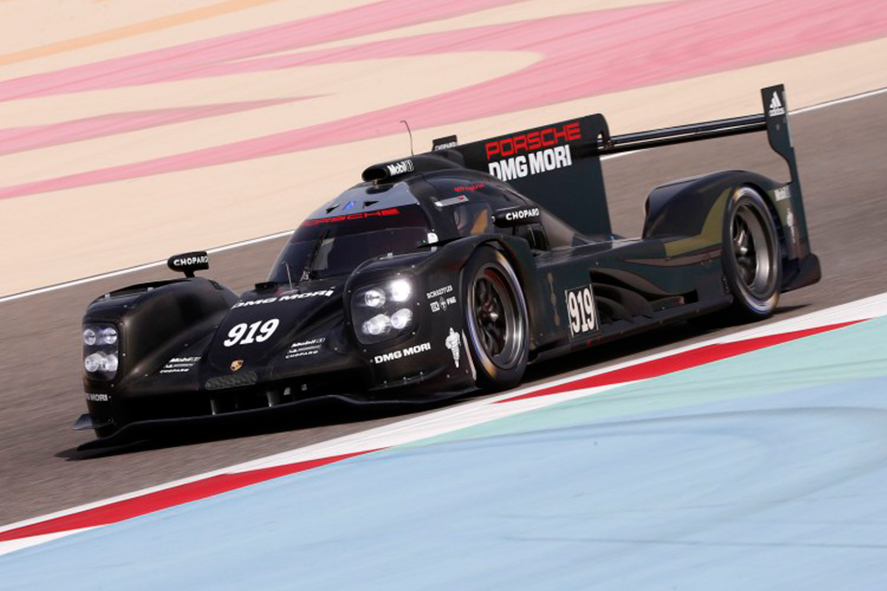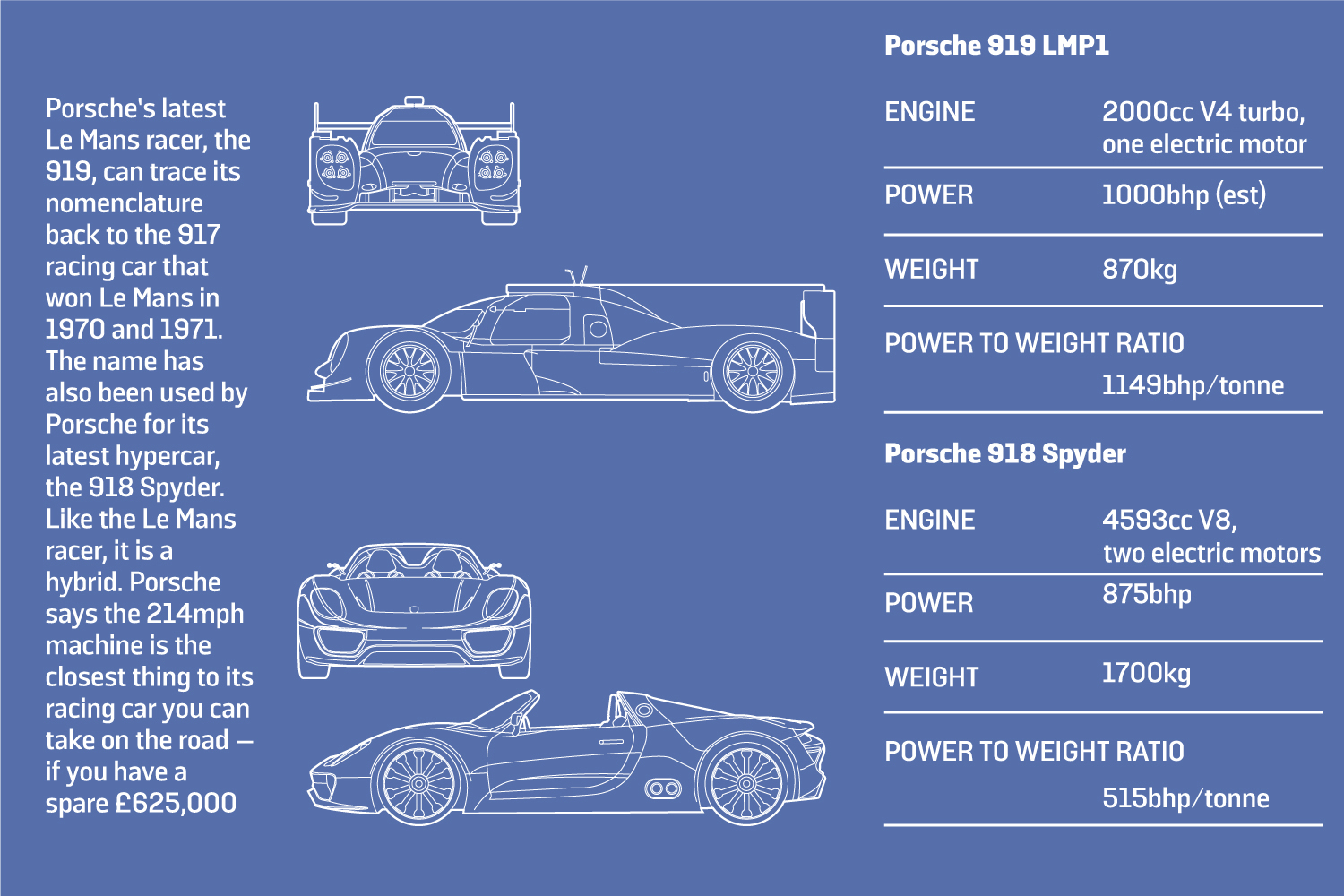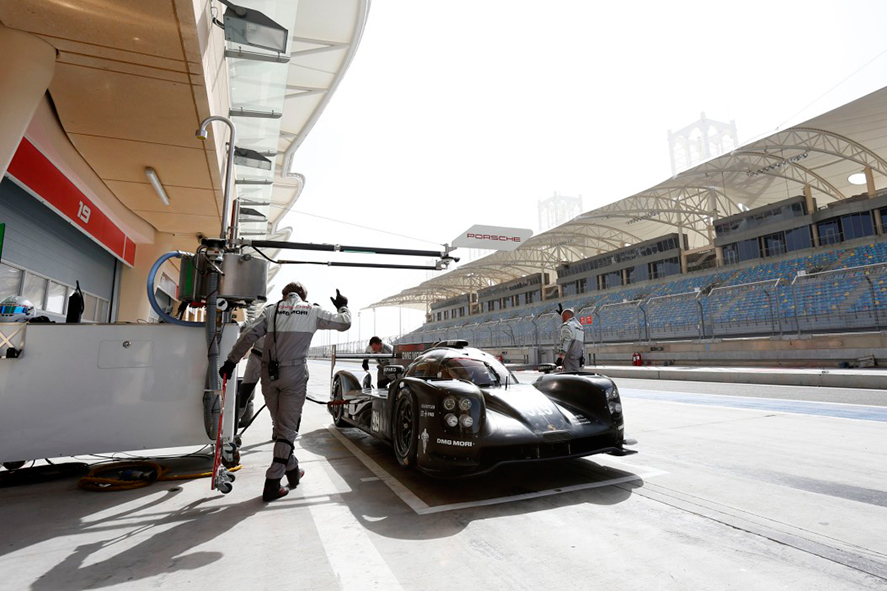Is the 2015 Porsche 919 LMP1 hybrid tough enough to win Le Mans?
If that’s Audi in the rear-view, we need to floor it

THE PORSCHE team are not happy. Strong winds are stirring up the desert, blowing sand across the Bahrain circuit. Lap by lap, and even corner by corner, the conditions are changing, challenging the drivers of the new 919 hybrid — the car Porsche hopes will drive it to victory at this year’s Le Mans 24 Hours. Lap times during this desert testing are inconsistent as the tyres struggle for grip. The team are getting tense.
It was not supposed to be this way. Porsche has decamped to the Middle East to prepare for a fresh assault on the World Endurance Championship, a series of eight races, the most famous of which is the Le Mans 24 Hours on June 13-14.
Browse the used Porsches for sale on driving.co.uk
Le Mans is unofficially known as the world’s toughest race; it is certainly the oldest, dating back to 1923. Teams must complete as many laps of the 8.47-mile circuit as they can, driving day and night, and, although the drivers may change, the car must remain the same. At speeds of up to 200mph over a distance of about 3,000 miles, that is no mean feat: mechanical failures are common, as parts simply grind away in the heat of the race. So are crashes, as drivers — pushed to their physical limits — lose concentration.
Preparation is everything. That’s why today in Bahrain more than 50 engineers are scrutinising the car’s performance as it howls around the track. They sit at two long benches, monitoring more than 70 screens of data. From here they watch everything from tyre pressure to traction control, aerodynamics and steering.
The atmosphere is more intense than usual at these pre-season testing sessions — and there is a good reason for that. More than just jobs are riding on the success of the car; there is also the reputation of the entire company. You see, Porsche has form when it comes to Le Mans — form that it takes a lot to live up to.

Although it’s still early days for the team here in Bahrain, it isn’t for Porsche. For three decades it dominated the sport of endurance racing, and it remains the most successful manufacturer ever to compete at Le Mans, holding the record of 16 overall wins at the race.
The last time he drove Porsche’s Le Mans racer, in last year’s World Endurance Championship, Webber collided with a slower car at the Interlagos circuit in Brazil within two hours of possibly victory. The other 919 went on to win. Webber was hospitalised with concussion and contusions, but the bruises to his body were perhaps less serious than those to his pride.
Now, almost three months later, he’s strapping himself into the 2015 car for the first time, and reminding himself of the physical toll it will take. At Le Mans, each car travels further in 24 hours than a Formula One car does in an entire race season, and they are more challenging to drive. If, like Webber, you’re more than 6ft tall, you sit reclined with your knees almost up to your chest and peer out through a tiny slot of a windscreen.
“A Formula One car is more comfortable,” Webber says. “It’s a problem to see other cars [competing in the race] and even the apex to corners [because of the driver’s position].”
The first, in 1970, was won with the famous 917, which appeared in the following year’s Le Mans film, starring Steve McQueen. The last victory was in 1998, when the 911 GT1 took the chequered flag. The company then abandoned the top tier of racing, concentrating instead on lower divisions for less powerful (and less expensive) cars. What many thought would be a pause from competition turned into a long absence: it wasn’t until last year — 16 years after its last victory — that Porsche returned.
Expectation was high: “Back where we belong,” announced its trackside advertising, and the fairy tale almost came true. For 22 hours the first-generation 919 was on course for a podium position, and even possible victory, until late mechanical failures hit. The best-placed car only finished 11th.

To add insult to injury, during its absence Porsche’s sister company, Audi, has been nibbling at its record and now has 13 victories to its name, having won the past five years’ races in a row. As the Porsche team’s technical director, Alex Hitzinger, admits: “There’s no shortage of pressure.”
Despite that pressure to replicate Porsche’s golden years — not to mention blow the upstart Audi into the weeds — the engineers appear confident about their current car. It is a complete reworking of last year’s model, with a 2-litre V4 turbocharged petrol engine working in tandem with an electric motor that drives the front wheels.
Although the precise power output of the 919 is guarded with all the secrecy of an HSBC tax scheme, Hitzinger admits: “It’s around 1,000bhp.” That’s 200bhp more than an F1 car, although the minimum weight is 179kg greater.
Hitzinger was a senior figure at Red Bull Racing before he moved to Porsche, and he’s just one of a number of high-profile recruits from the grand prix paddock. Another is Mark Webber, brought in to raise the profile of the Porsche team and announce to the world that they were back in business and serious about winning.
Webber is now 38 and a veteran of 217 grands prix, but he clearly isn’t taking the challenges of Le Mans lightly: the visitors’ book for the gym in the team hotel reveals the first visitor to be one M Webber — at 7am.

It’s a problem that will afflict his fellow Porsche driver Nico Hulkenberg too. He is also in Bahrain to try the latest version of the car he will drive at Le Mans. “I’ve never actually raced in the dark before,” says Hulkenberg. “There’ll be lots of new situations for me during a race and I’ll just have to learn as fast I can and adapt,” he says.
The two drivers can expect to lose 2lb through sweating during every four hours spent behind the wheel — the typical length of a racing shift. Their average heart rate will be 180 beats per minute, three times their resting rate. Braking forces reach 4g — an enormous stress on their bodies.
But who said racing was fun? For the drivers, at least, it’s all about blood, sweat and toil. That is the price of endurance racing. The glory is winning.
Browse the used Porsches for sale on driving.co.uk




